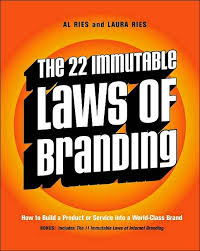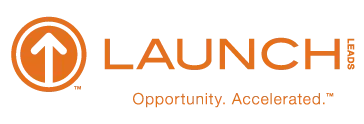 The 22 Immutable Laws of Branding: How to Build a Product or Service into a World-Class Brand
The 22 Immutable Laws of Branding: How to Build a Product or Service into a World-Class Brand
Written by: Al Ries and Laura Ries
Summarized by: Amie Hansen
Don’t forget part 9. Click here to read it.
Part 10
Chapter 19 – The Law of Consistency
A brand is not built overnight. Success is measured in decades, not years.
A brand cannot get into the mind unless it stands for something.
Markets may change, but brands shouldn’t. Ever. They may be bent slightly or given a new slant, but their essential characteristics (once those characteristics are firmly planted in the mind) should never be changed.
Tanqueray is the leading high-end gin. But Absolut and Stolichnaya have created a trend toward high-end vodkas. So Tanqueray introduces Tanqueray vodka. Will Tanqueray cut into the Absolut market? Of course not. Will Tanqueray vodka undermine the Tanqueray gin market? Ultimately, yes. Tanqueray should stick with gin and hope the market swings in its direction.
Brands are used as personality statements (sometimes called “badges”). Your choice of a badge is often determined by the statement you ant to make to friends, neighbors, coworkers, or relatives.
When kids grow up, they inevitably want to make a statement about their newfound maturity by changing brands…from Coca-Cola to Budweiser, for example. If Coca-Cola decided to try to retain these customers by “moving with the market,” it would then logically introduce a product called Coca-Cola beer. As foolish as Coca-Cola beer might seem to you, conceptually it’s no different from Tranqueray vodka.
Markets may change, but brands should stay the same.
Brand building is boring work. What works best is absolute consistency over an extended period of time. Volvo has been selling safety for thirty-five years. BMW has been the ultimate driving machine for twenty-five years.
Run up a red flag whenever you hear the words: “Why should we limit ourselves?” You should limit your brand. That’s the essence of branding. Your brand has to stand for something both simple and narrow in the mind. This limitation is the essential part of the branding process.
Limitation combined with consistency (over decades, not years) is what builds a brand.
Rome wasn’t built in a day. Neither is a brand of Romano cheese.
Chapter 20 – The Law of Change
Brands can be changed, but only infrequently and only very carefully.
There are always exceptions to every rule and the law of change is the biggest exception to the laws of branding.
Brand changing does not occur inside a company. Brand changing occurs inside the mind of the consumer. If you want to change your brand, keep your sights on your target: the consumer’s mind.
There are three situations where changing your brand is feasible:
1.) Your brand is weak or nonexistent in the mind. There is no brand, so you can do anything you want with the brand name.
2.) You want to move your brand down the food chain. If you are permanently lowering the price of your brand, you can often move it down the price ladder without hurting the brand. Customers will believe they are getting a lot of value by purchasing your brand. Sometimes prices get out of line and permanent adjustments need to be made.
3.) Your brand is in a slow-moving field and the change is going to take place over an extended period of time. The key concept to keep in mind is that little change has actually occurred in the mind of the prospect. Instead of “changing” minds, you allow enough time to pass so that the natural process of “forgetting” takes place.
What you think your brand is really doesn’t matter. It’s only what your customer thinks your brand is that matters.
If you want to change your brand, first look into the prospect’s mind. Where are you? Perhaps you’re not in the mind at all. Fine, change away.
But if you are in the mind, and if you have a unique and distinct perception, then change your brand at your own risk. It’s going to be a long, difficult, expensive and perhaps impossible process.



